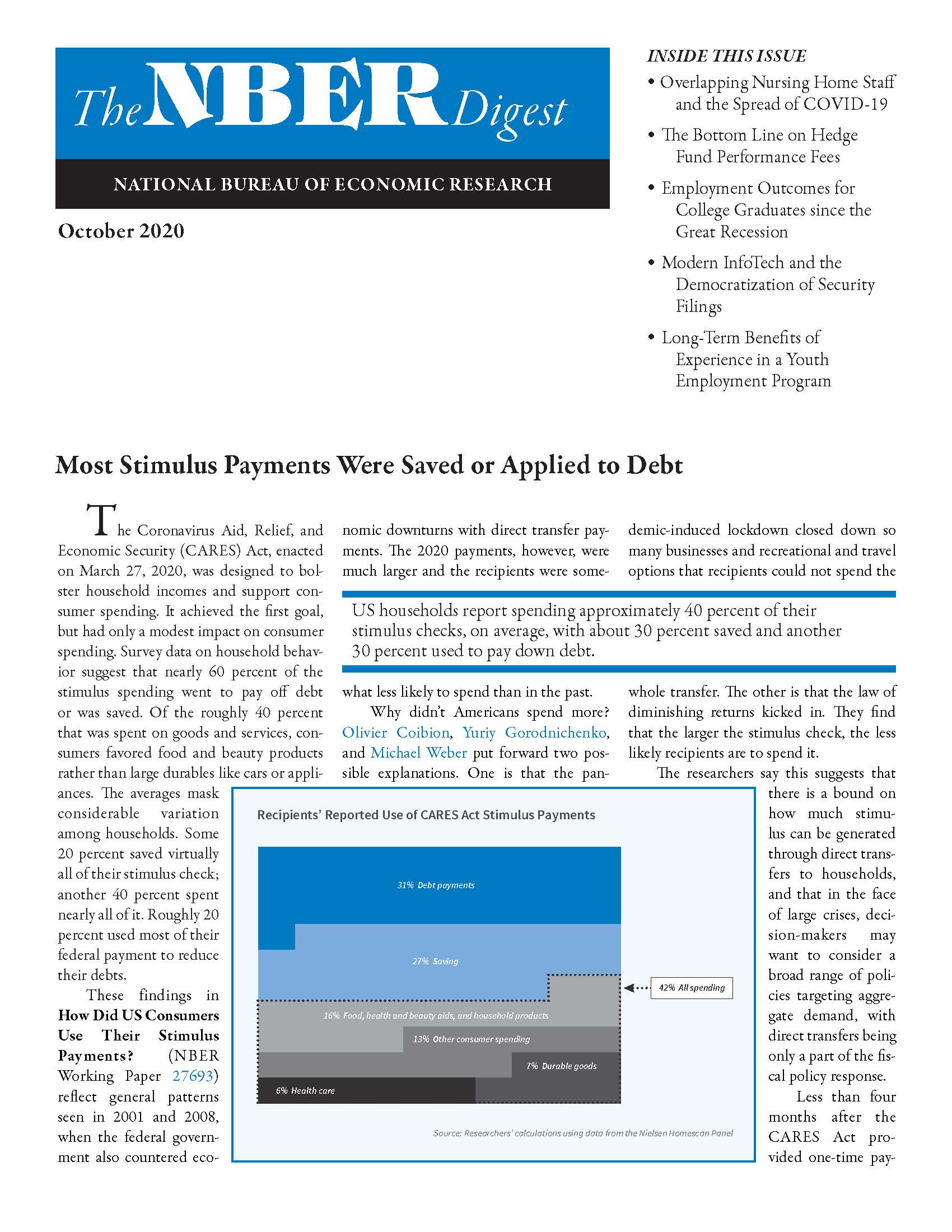October 2020 NBER Digest
Employment Outcomes for College Graduates since the Great Recession

Job-finding rates and wages fell for new graduates entering the labor market in 2009 and 2010, but poorer prospects for young workers actually began before the recession and continued through the recovery.
There has been a substantial deterioration in the employment prospects of recent college graduates, Jesse Rothstein finds in The Lost Generation? Labor Market Outcomes for Post Great Recession Entrants (NBER Working Paper 27516). Cohorts that graduated during the period of economic weakness following the recession, which ended in 2009, had trouble finding toeholds on job ladders and generally have had weak earnings trajectories. However, this phenomenon is not simply a result of the recession. Graduates who entered the labor market beginning around 2005, as well as those who entered in the economically stronger period 2011–19, have had lower employment rates, relative to older workers in the same labor market, than earlier entrants. Something appears to have changed in the labor market, creating negative effects on new generations' employment rates.

Most Stimulus Payments Were Saved or Applied to Debt
Overlapping Nursing Home Staff and the Spread of COVID-19
The Bottom Line on Hedge Fund Performance Fees
Employment Outcomes for College Graduates since the Great Recession
Modern InfoTech and the Democratization of Security Filings
Long-Term Benefits of Experience in a Youth Employment Program
< Previous Digest Issues >
Rothstein studies the early-career economic outcomes of college graduates in the period between the Great Recession and the coronavirus-related economic collapse. He uses repeated cross-section data from the monthly Current Population Survey to examine individuals born between 1948 and 1997. He observes them at ages 22 to 40, between 1979 and 2019. His primary indicator is weekly employment.
The cohort that entered the labor market in 2010 experienced an employment rate that was on average 2 percentage points lower than what would have been expected based on earlier periods. The decline is even larger for more recent cohorts. Also, in the cohort that entered the labor market in 2009, wages for those who are employed are lower than those in cohorts that entered earlier, by about 2 percent.
Both employment and wages exhibit "scarring" effects of early-career conditions, though in different ways. Those who face high unemployment rates at the start of their careers have lower wages through their first several years in the labor market, but these scars gradually fade. Scarring effects on employment, in contrast, are permanent. Cohorts that face high unemployment when they enter the labor market have lower employment rates throughout their careers.
Rothstein finds a structural break in young college graduates' employment rate beginning with the cohorts that entered the labor market around 2005. The decline in employment rates continued after the recession of 2008–9, not just for those who entered during the downturn, but for successive cohorts as well. Scarring effects, while quantitatively important, are not large enough to account for these outcomes. Moreover, they cannot explain poor outcomes for the most recent pre-pandemic entrants, who encountered historically low unemployment rates at the outset of their careers. The labor market grew steadily stronger from 2011–19, and overall employment rates rose, but the employment rates of new graduates were stagnant despite this rising tide. The most recent cohorts have relative employment rates 3 to 4 percentage points lower than would have been anticipated based on the pre-2005 trend.
— Lauri Scherer
The Digest is not copyrighted and may be reproduced freely with appropriate attribution of source.